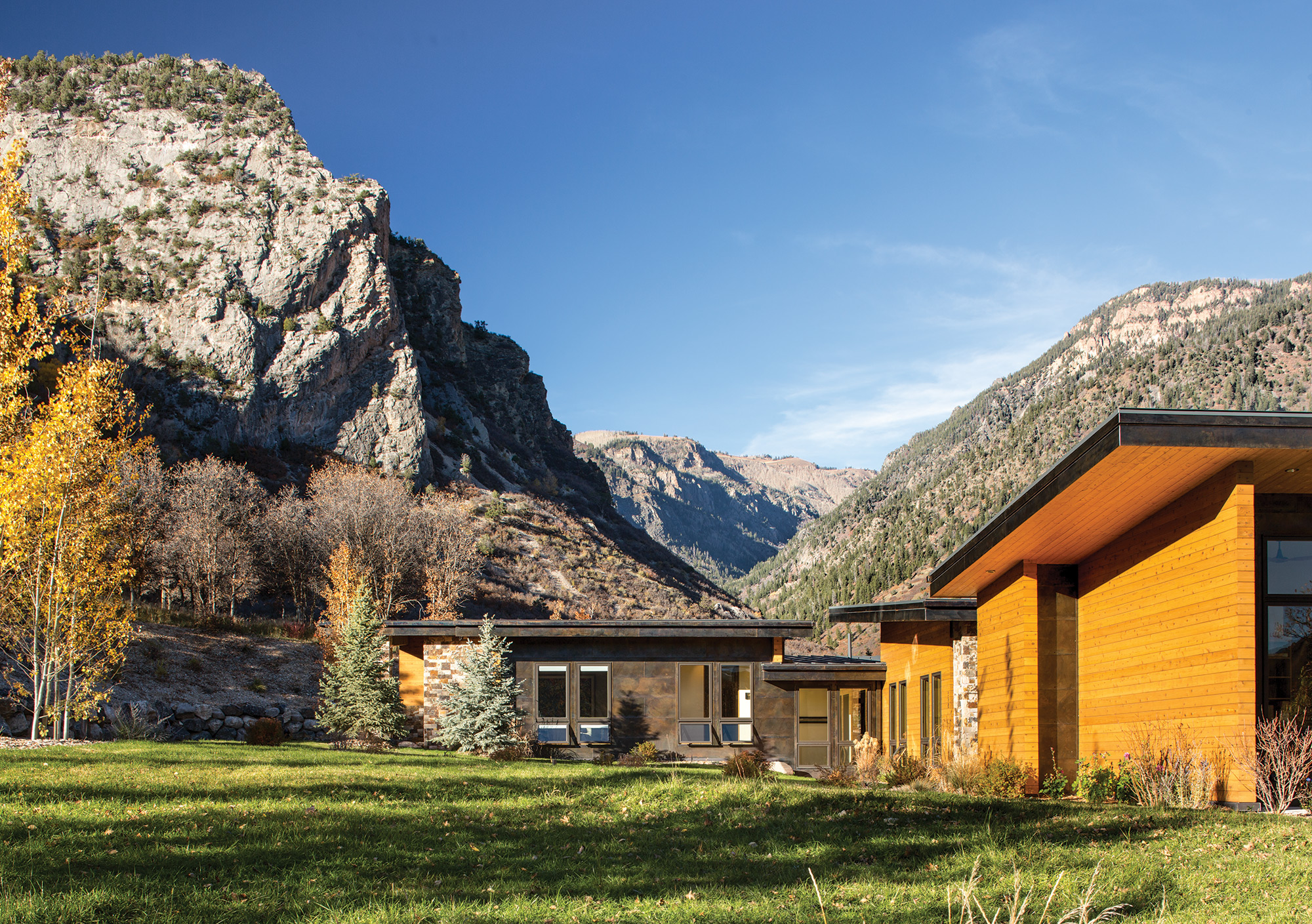
04 Aug Think Big: Live Small
RKD PRINCIPAL JACK SNOW WAS COMPLETING THE PLANS for a 6,000-square-foot home on a ranch in western Colorado when his clients put the brakes on the project. Despite Snow’s positive temperament, his disappointment was palpable.
“This was by far the most intriguing sculpture I’ve ever designed,” he says, describing a series of overlapping and irregular planes that formed the proposed roofline. “We were selecting finishes and ready to break ground when they concluded that their lifestyle didn’t necessitate such a large house.”
Fortunately, Snow had plenty of experience working with his clients Valarie and Stu Ross, and he intuitively knew the hiatus was only temporary. “Not only had they decided that we needed to modify the design for how they would live in this place, but more importantly they realized what an extraordinary natural setting they had in their possession. They wanted to make sure they did the right thing for the land,” Snow says.
The site was located on a 500-acre ranch along Canyon Creek, just west of Glenwood Springs, Colorado. Named after a national park in Stu’s childhood home of Zimbabwe, Inyanga Ranch is a picture of the quintessential Western landscape. The property sits in a lush but narrow valley surrounded by uninhabitable rugged cliffs. Near its northern boundary is an imposingly beautiful mesa and the Flat Tops Wilderness.
Snow and his wife, architect Sally Brainerd, founded their Vail-based firm, RKD Architects, in 1989. To them, designing a home is similar to creating a sculpture. “Real architecture,” Snow says, “starts with a blank canvas. To that canvas, you add the influences of nature — wind, views, aspect and temperature. And then you layer on a program, and you get something completely unique, different and three dimensional.”
The ranch, which bears a resemblance to the romantic imagery rendered by iconic Western artists such as Maynard Dixon, Howard Post and Clyde Aspevig, provided the ideal canvas on which to craft the two-bedroom home called Mana. Having designed several other projects for the Ross family, including a 12,000-square-foot home in Telluride, Colorado, Snow explains that the decision to downsize was the right thing to do.
“All the bells and whistles that we had designed into the previous homes simply wouldn’t fly in this rural and remote location,” he said. “Like many of my clients, Val and Stu just wanted to simplify their lives. They love Colorado, and they want to feel like they are a part of the landscape.”
While the homeowners may build another house at some point, the two-bedroom residence is perfect for now. The couple spent many hours with Snow to determine what they really needed and how the design would respond to those needs. “We wanted something that fit into this landscape of rocky cliffs, boulders and native vegetation,” says Stu, adding that one of their main requirements was “plenty of glass to bring the outside into the home.”
Primarily designed for summer and fall use, the 2,000-square-foot home sits on a natural bench overlooking the Canyon Creek valley. Stu says this is the location he and Valarie gravitated toward when they first purchased the ranch in 2012.
“This site is really the heart of the property, and living here makes us feel like we are a part of the ranch. Everywhere we look we see something enchanting,” he says. “The elk meander right up to the windows and look at us, and we look right back.”
A butterfly roof, deep overhangs and carefully orchestrated fenestration capture views to the north, east and south, while offering protection from the persistent sun and warm summer winds. The palette for the interior and exterior is constrained and muted — a testament to Snow’s desire to make a sculptural statement that would complement, not compete with, the surrounding environment. The exterior is clad in a patinated steel skin and a native Colorado stone that looks as if it was gathered right on the property.
Inside, touches of Stu’s African roots are evident, including a photo of a giant elephant nicknamed Brutus by Snow. Its floor-to-ceiling presence contrasts with an elegantly honed, free-standing granite vanity and sheet glass in the powder room. Snow designed most of the furniture throughout the home to be comfortable and classic; another nod to his holistic view of architecture as art. And Valarie and Stu designed the rest of the interior. “They didn’t want to be told what they were supposed to like,” Snow says.
On the north side of the home, where the orthogonal and layered lines of the kitchen and dining room meet, is a large, rectangular swimming pool. Deep overhangs bolstered by stone columns shelter a simple gas fireplace, creating an appealing and comfortable indoor-outdoor living environment that is enjoyed from early spring well into the crisp days of late autumn. A simple pool deck merges with a gently sloping lawn that meets the bosque of mature cottonwood trees, blending into the natural pastureland below the home.
The couple renovated two existing log cabins located just up the road from the main house, including one that was built in 1929. Both cabins serve as guest quarters for friends and family, preventing the need for multiple guest rooms within the floorplan.
Like most of RKD’s work, Mana is a unique home designed for a specific program. While there are some tried-and-true architectural elements that Snow relies upon, he is proud of the fact that his firm does not follow trends or impose a specific design approach.
“The only design style I’ll ever want to copy is my own, and I’ll want to change it because I’ve done it before,” says Snow. “My work tends to appeal to people who are feeling adventurous and who see architecture as a form of art as well as a structure for habitation.”
- The stone patio emerges as an extension of the home, joining the interior living spaces with the exterior.
- Snow describes Mana as one of the most serene and quiet pieces of architecture he has ever designed. Below, from left: In the home’s center, the kitchen captures the warmth and simplicity of the architecture.
- Through the windows of the master bedroom, the geometry of the surrounding landscape offers a lovely backdrop for this pristine and private getaway.
- The single story home offers year-round indoor-outdoor living opportunities.
- In the home’s center, the kitchen captures the warmth and simplicity of the architecture.
- A hallway, lined with a selection of the owners’ rich and varied art collection, enhances the earth tones of a patinated steel wall.
- Working together, the owners and the architect envisioned interior spaces that were artfully crafted yet completely relaxed. Custom furniture designed by the architect, such as the dining room table and chairs, suggests intimacy and attention to detail.
- The quiet and intimate interior space of the living room is a welcomed counterpoint to the dynamic and ever-changing landscape outside.
- Patinaed steel cladding, similar to that used on the home’s exterior, offers an interesting contrast to the zebra-striped wood cabinets and dark Neolith countertops.
- The material palette blends from one room to the next, even in this elegant bathroom.






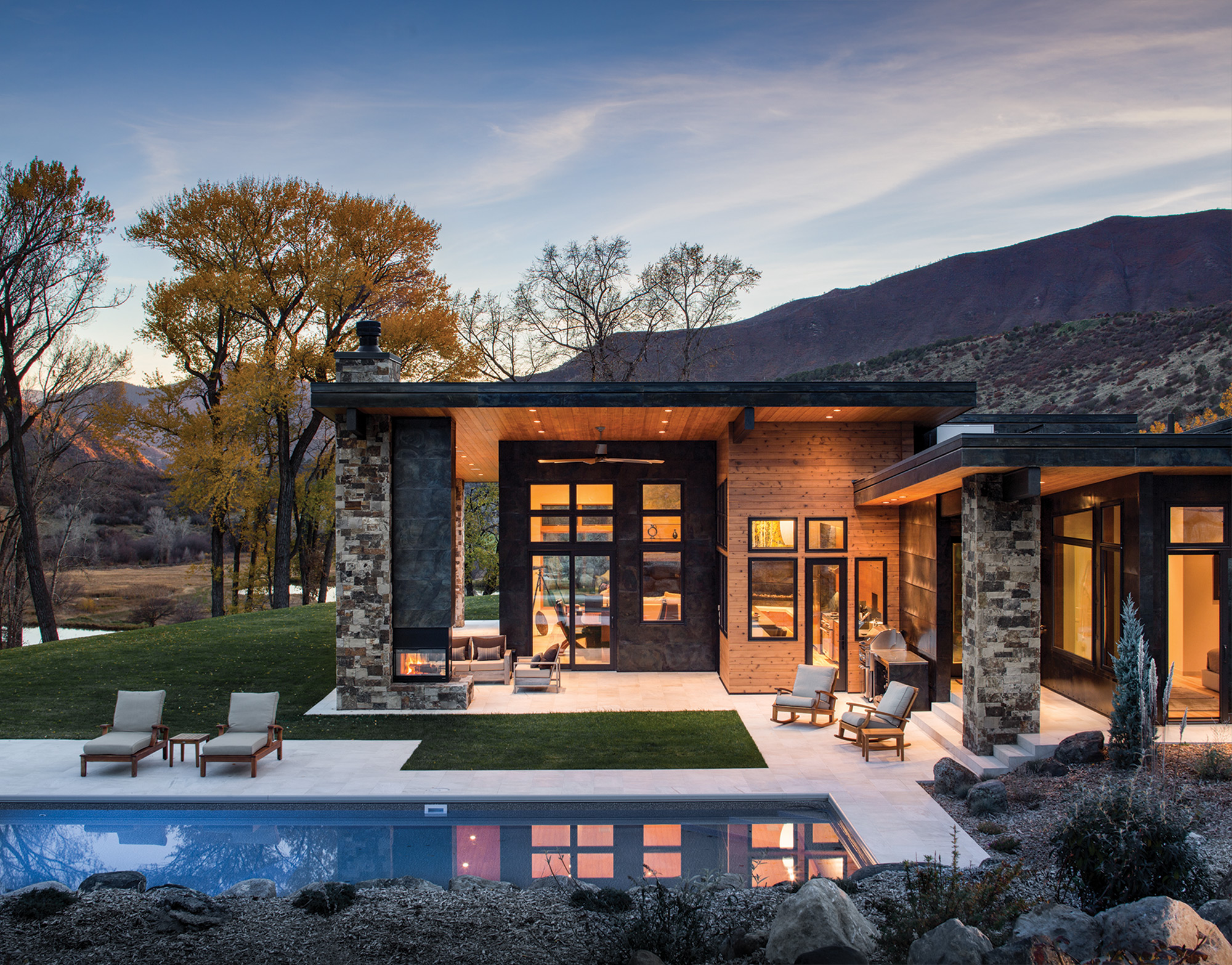

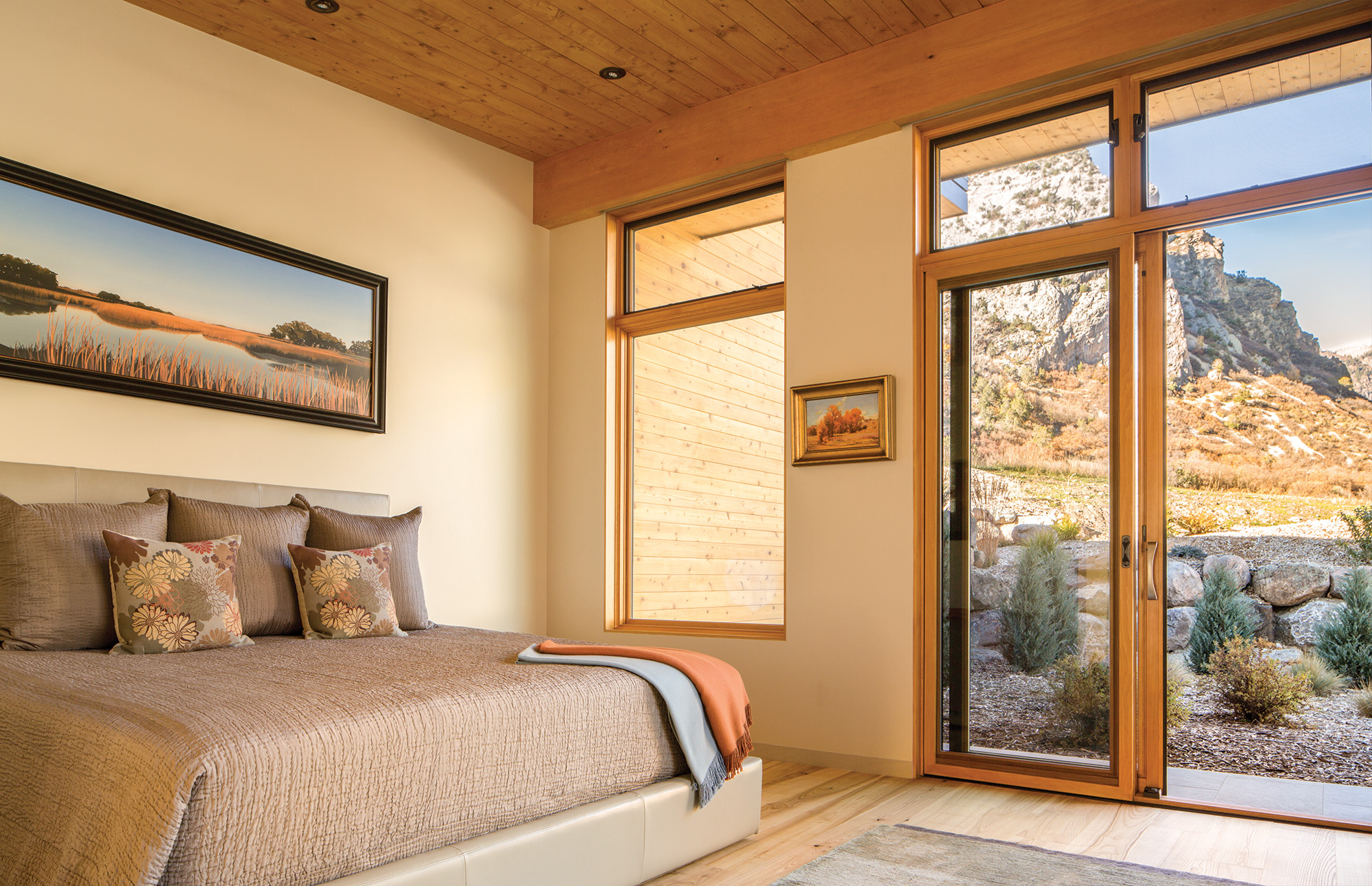
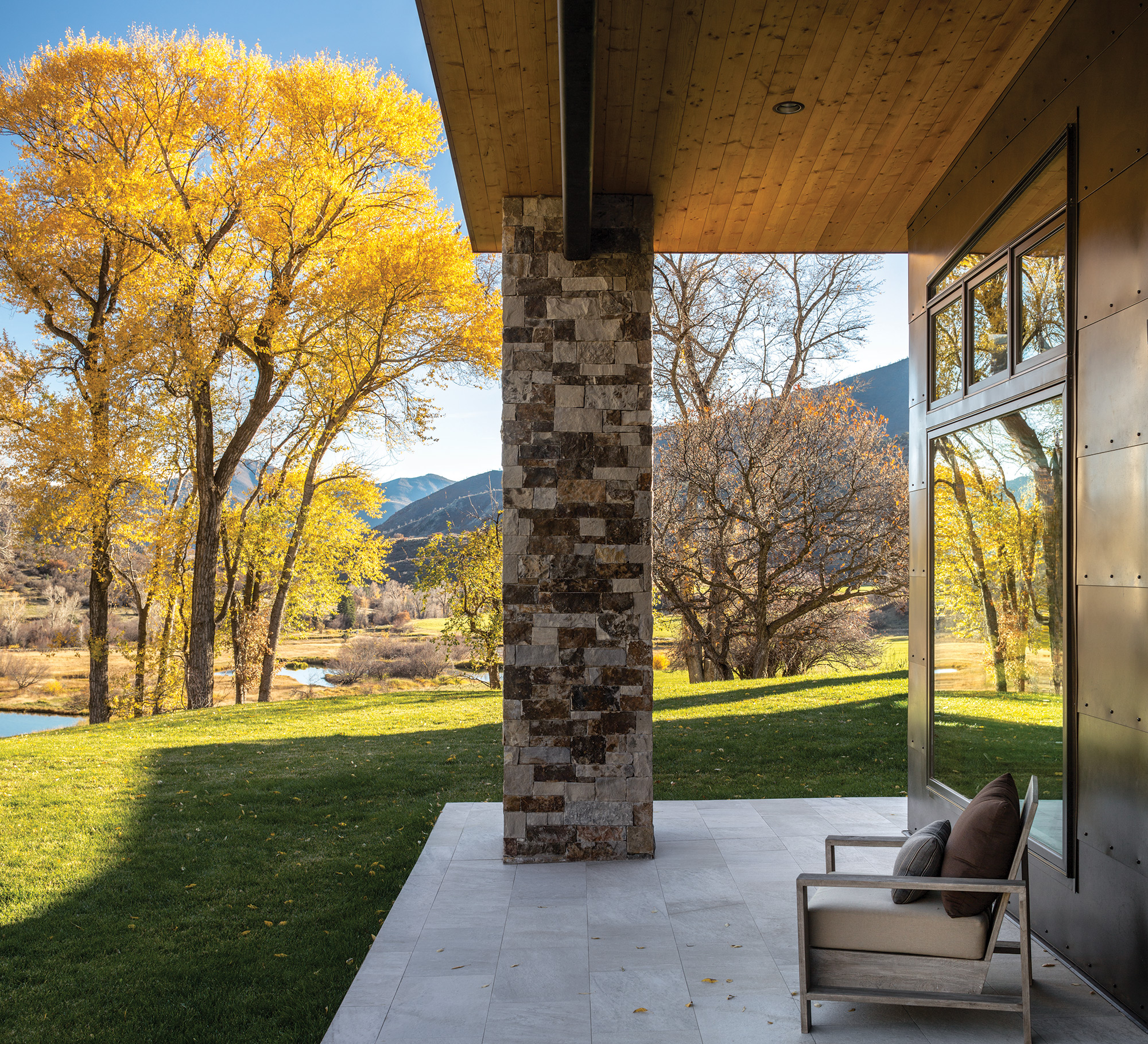
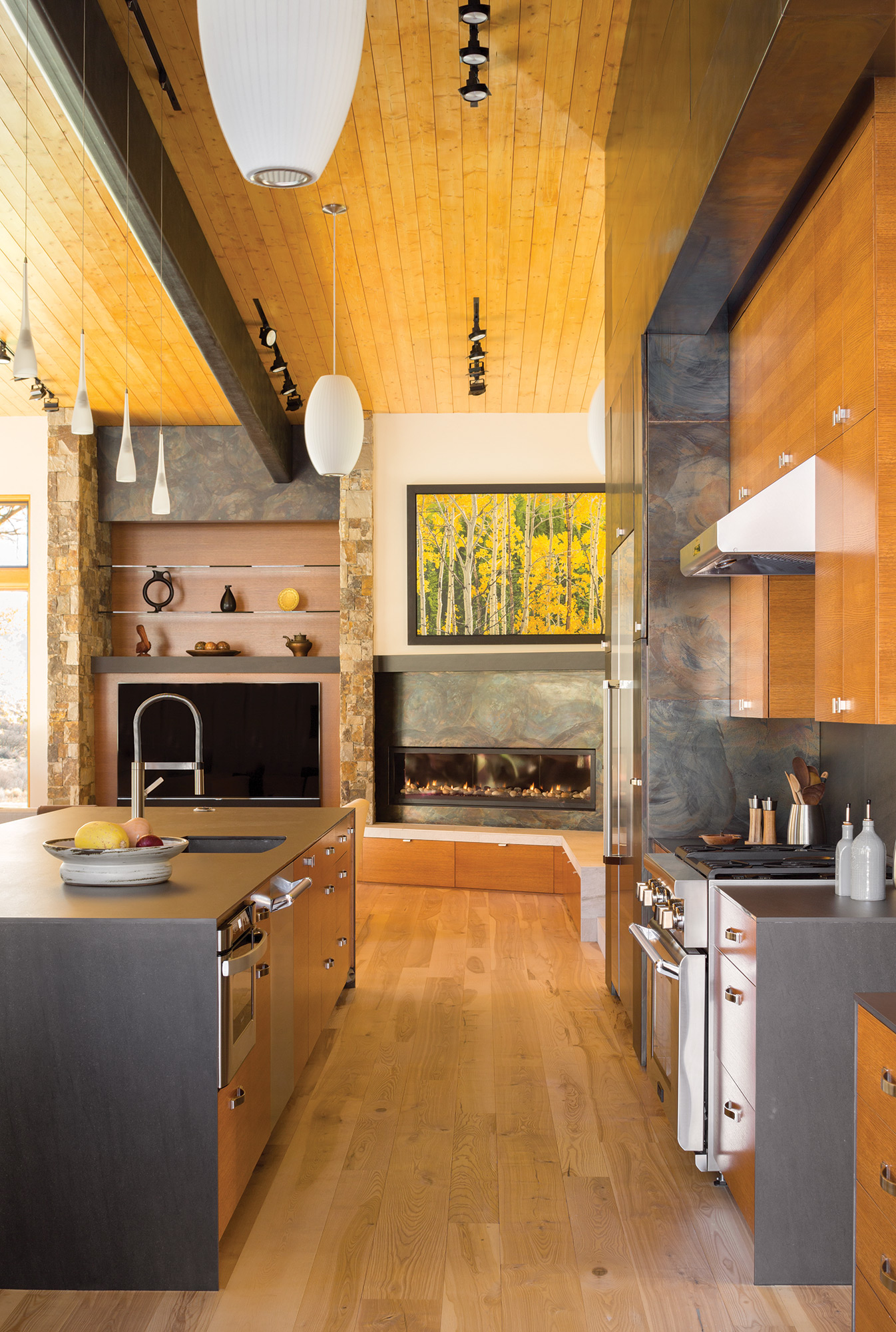
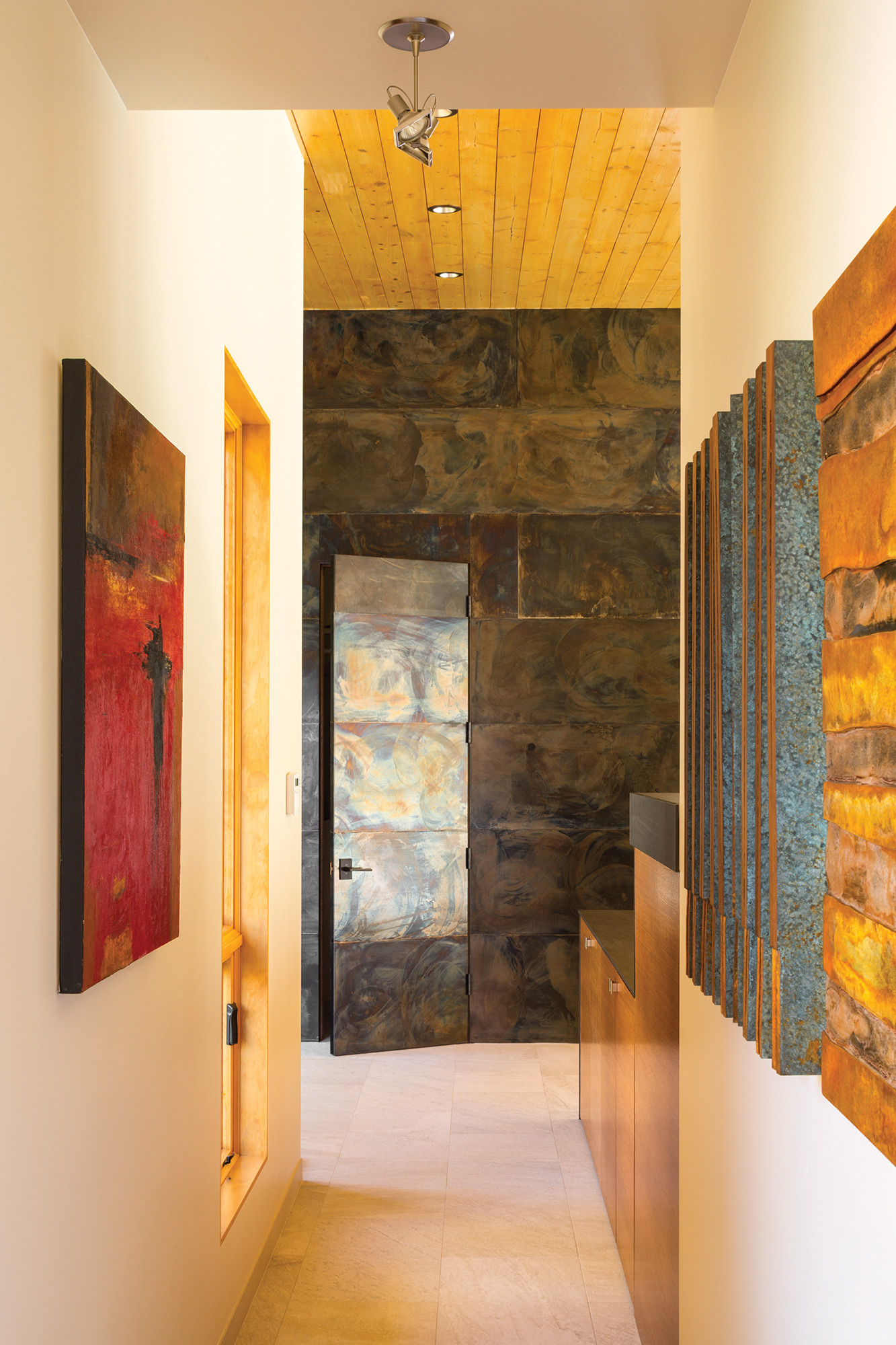

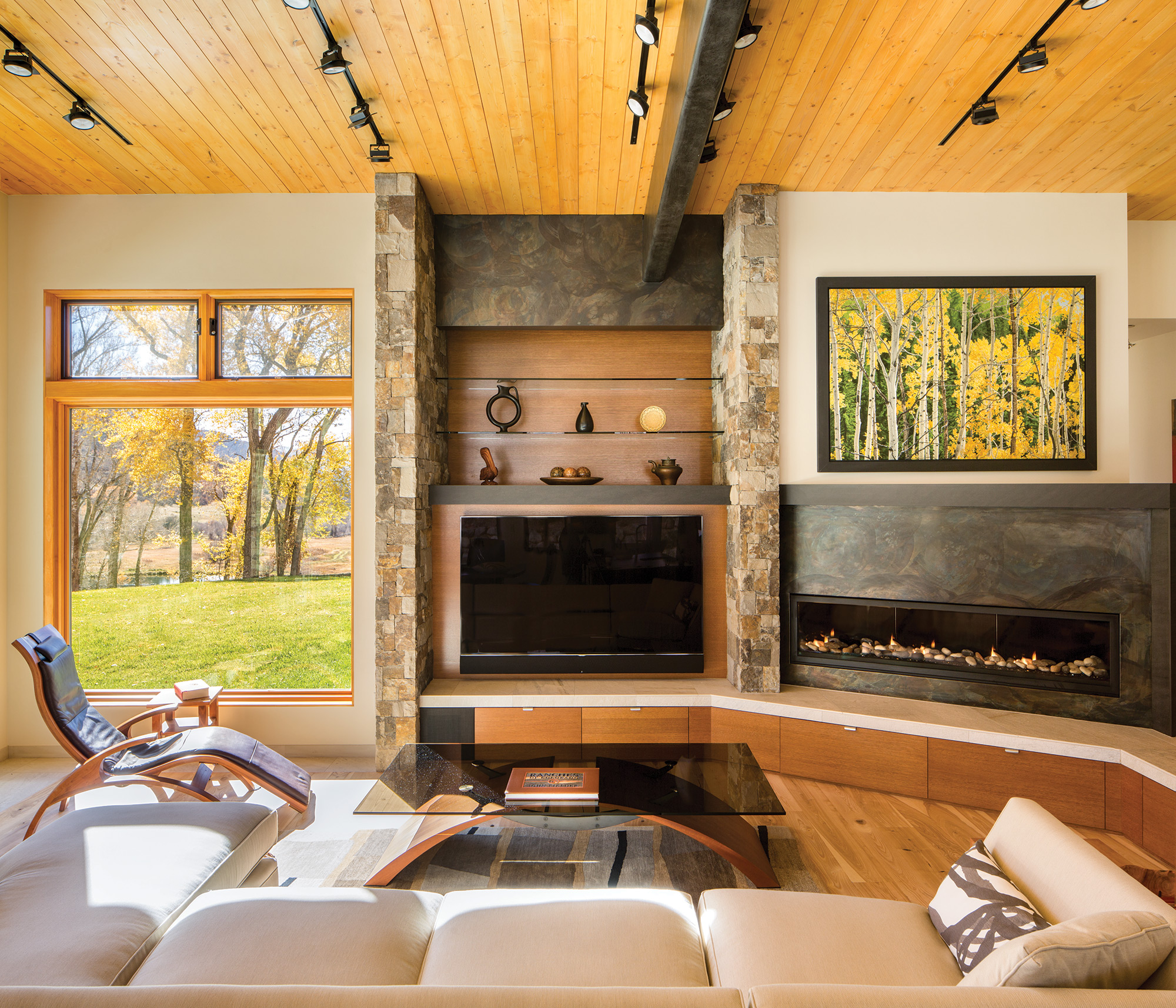
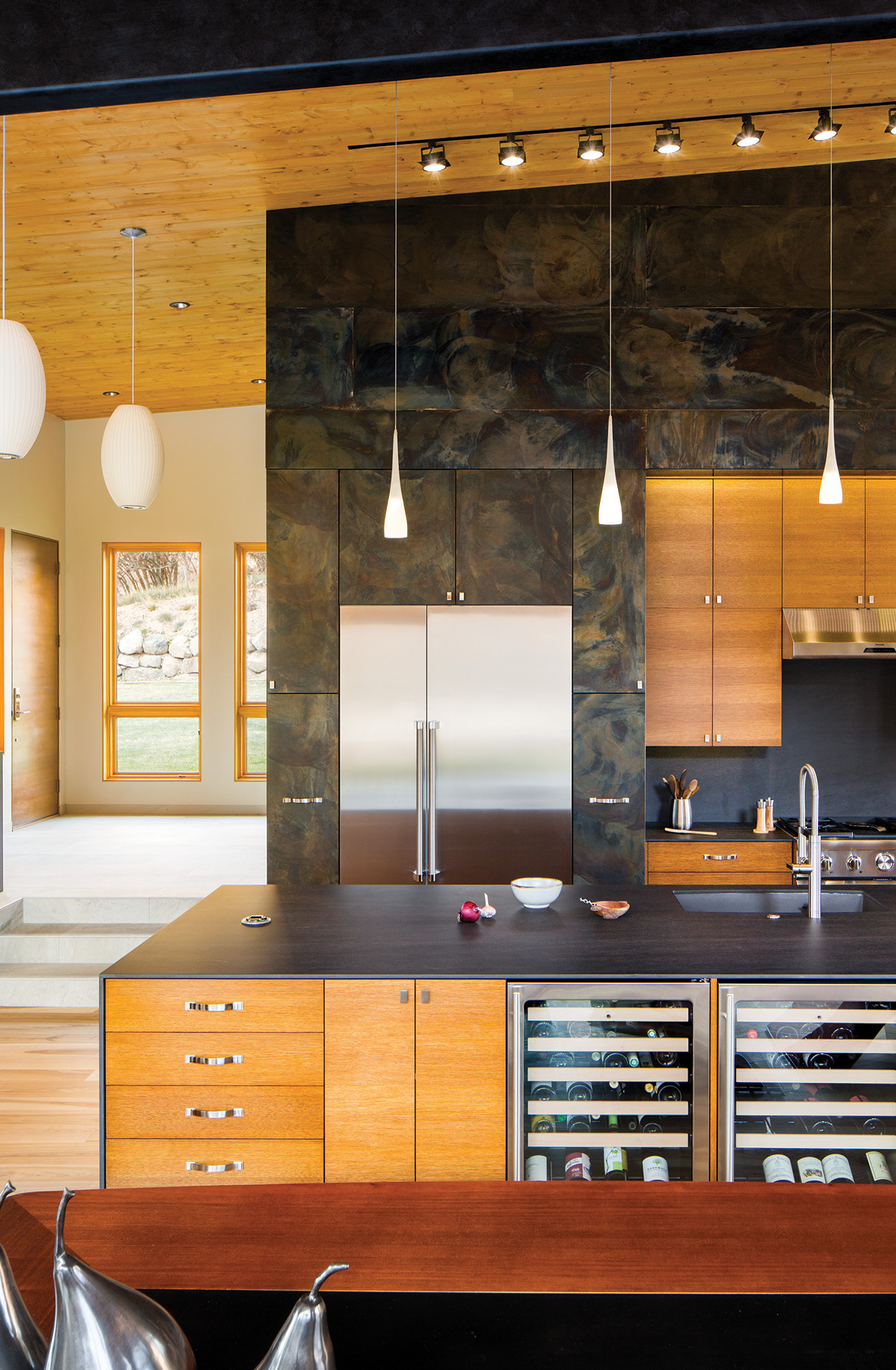
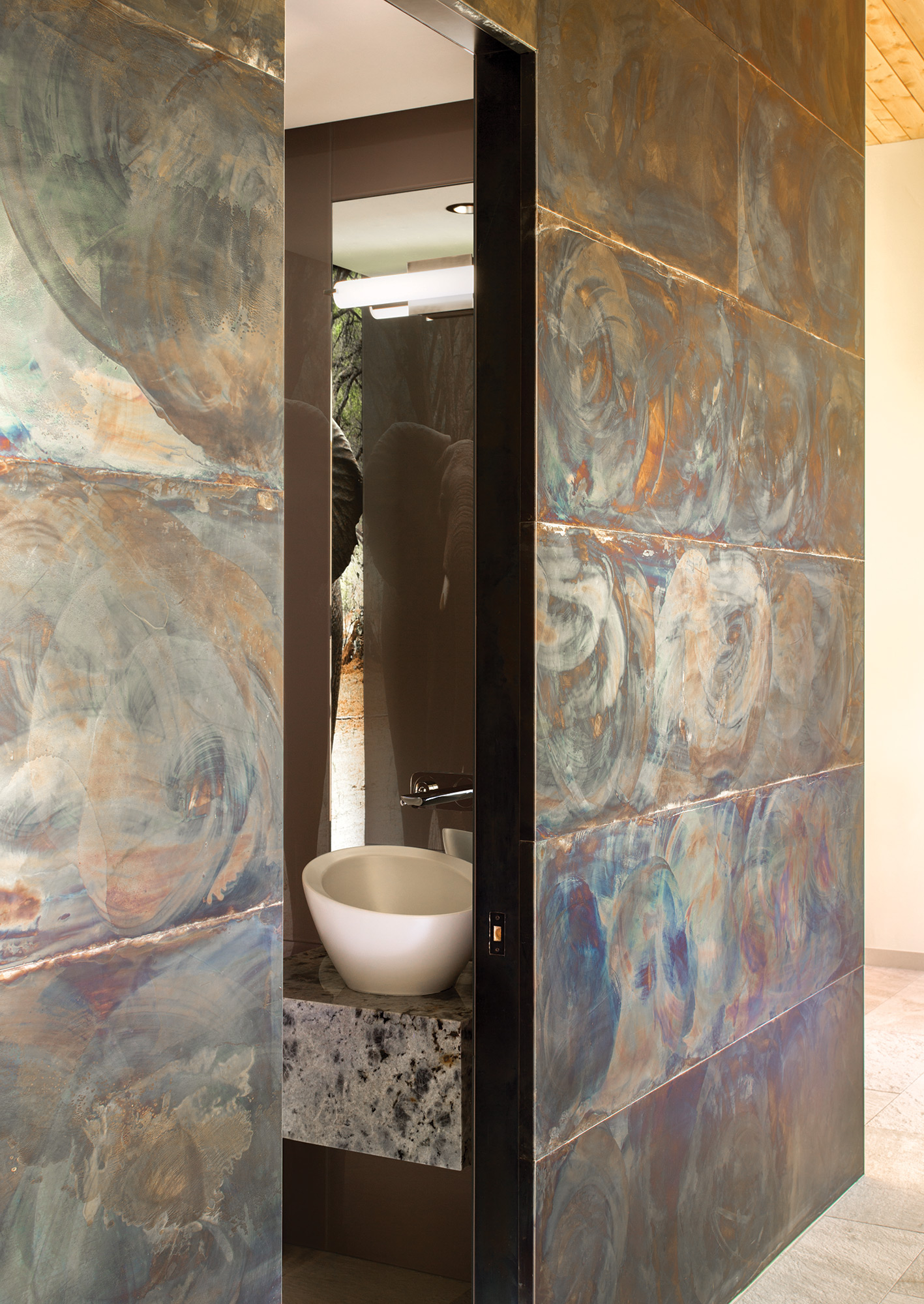
No Comments